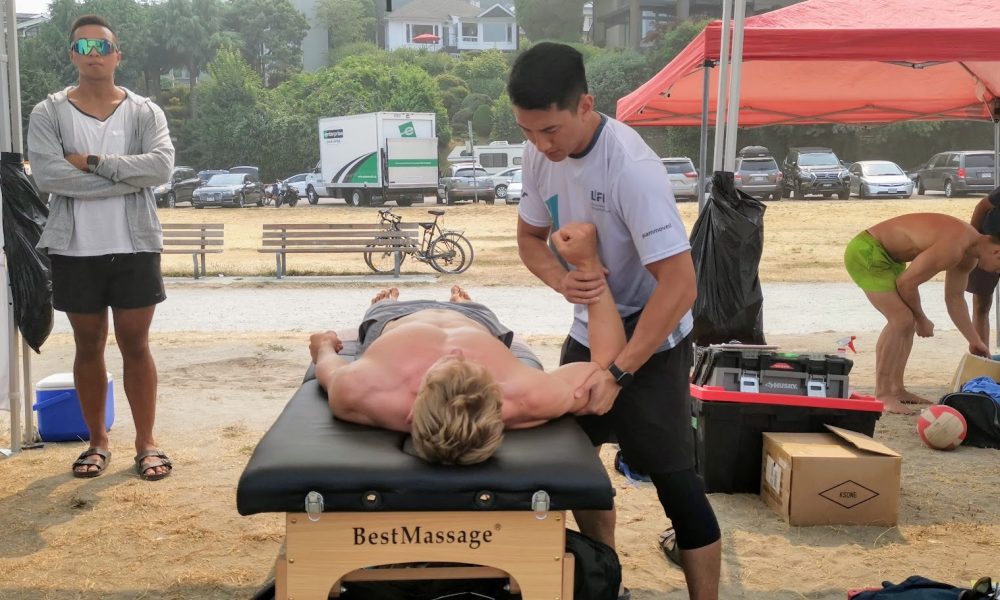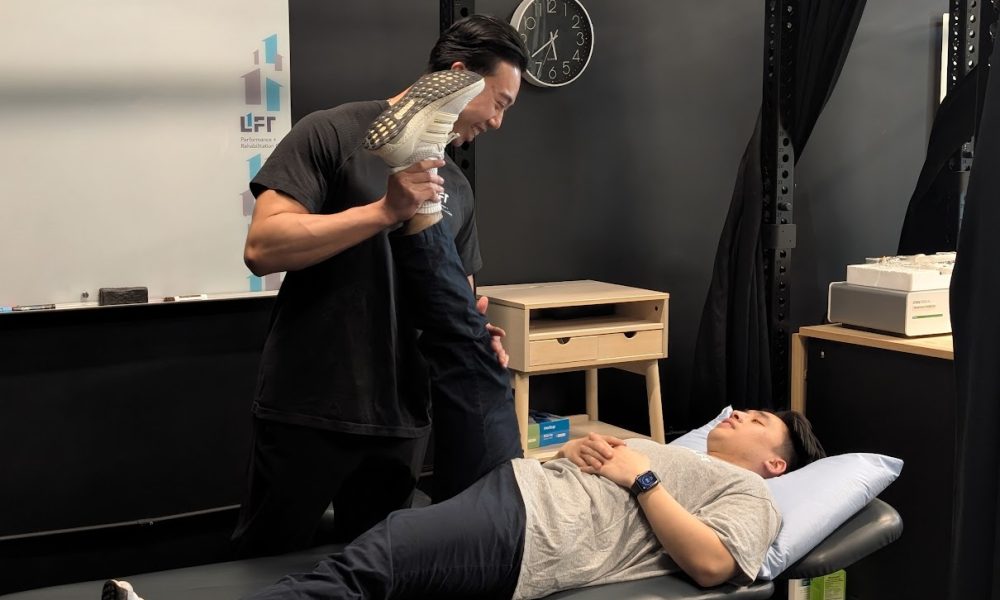Beach volleyball looks carefree—but any athlete who’s chased a dig across Kits Beach knows it’s serious business for your body. At Lift Clinic, we work with athletes who want to train hard, stay healthy, and elevate their game.
This article breaks down the latest research on beach volleyball performance, injury risk, and training surfaces. Whether you’re returning from injury, looking to jump higher, or staying game-ready all summer, these insights can help you train smarter and recover faster.
"Training and competing at the highest levels, we’ve learned how critical it is to take care of our bodies. Lift Clinic has been an essential part of our journey—from injury recovery to strength development and staying game-ready through long seasons. Their team truly understands beach volleyball and tailors everything to what you need on the court."
- Megan & Nicole McNamara, Canadian National Beach Volleyball Team / UCLA
1. Sand vs Hard Surface Training: What the Science Says
A 2021 meta-analysis by Pereira et al. compared training on sand versus hard surfaces for sprint and jump performance. The takeaway? Sand training is just as effective at improving jump height and sprint speed. Plus, it activates more stabilizing muscles and reduces impact forces, making it a joint-friendly option. Training on sand has also been shown to increase cardiovascular fitness.
Coach Tip:
If you're already playing beach volleyball, you are likely meeting all the benefits of sand training. Instead of adding more sand training, build strength, explosiveness and optimal mobility in the gym to gain an edge. If you're an indoor athlete, beach volleyball may be a great cross-training opportunity with lower injury risk and additional strength and conditioning benefits for your off-season. Ideally, you'll gradually introduce yourself to the sand as the season begins, to allow your body to get used to the new surface (rather than jumping right into a 2-day tournament)!
Want help building your off-season plan? Book a complimentary training consult with a Lift Clinic strength coach to get started.
2. Injury Risk: How Beach Compares to Indoor Volleyball
According to Juhan et al. (2021), beach volleyball has a lower injury rate than indoor (1.8 vs. 5.3 injuries per 1000 hours). That said, overuse injuries in the shoulder, low back, and knee are still a major concern in beach athletes.
Traumatic injuries to the ankle, finger, and occasionally the knee (ACL, MCL and Meniscus) are also a risk but they happen much less often than in other sports.
Beach athletes also take longer to recover from those injuries: up to 52 days for shoulder issues.
This is hard to explain from an anatomic/biomechanical point of view, but here at Lift Clinic we think it’s probably due to the fact that when playing 2-on-2 beach volleyball, there’s no “hiding” your shoulder injury. You’re going to get picked on, served, and attacked more. And you’re going to feel an obligation to your partner to play, even when it’s probably not the right decision for your body. Indoor volleyball has the option to sub you out and play just enough to contribute to a gradual return process, but beach volleyball is all or nothing with no subs.
Oh, and one more thing. Sand can carry a risk of infection due to fungi and nematodes. Gross. Protect open wounds, and wash up well. You’re welcome.
Did you know? Even if you avoid acute injuries, subtle issues can build up and limit your performance.
"My biggest tip to prevent injuries is to remember that the tournaments are usually long and grueling days with many games being played,. Make sure to do a warmup that focusses on increasing your heart rate and activating key muscle groups!"
- Cameron Fay, Physiotherapist & Former Capilano University Volleyball Athlete

3. The Cumulative Toll: Overuse Injuries in Beach Volleyball
Studies by Verhagen et al. and Kilic et al. highlight a consistent trend: beach volleyball athletes face a high rate of overuse injuries — particularly jumper’s knee (patellar tendinopathy), shoulder strain, and low back pain.
These are usually caused by repetition, poor recovery, and strength imbalances. If untreated, they can lead to long layoffs or re-injury.
Athlete Insight: If you spike 100 balls a session, make sure you’re doing the right 10 exercises to support it. Ideally, you want a volleyball-oriented warmup that includes 5-10 minutes that is specific to your body. What makes you unique?
"The one thing I wish I did when I was a young volleyball athlete was strength training! I noticed a huge improvement in my game once I took resistance training seriously. My vertical increased, had less injuries and was able to hit a lot harder."
- Cameron Fay, Physiotherapist & Former Capilano University Volleyball Athlete

4. Proven Prevention: Warm-Up and Monitoring
Verhagen and Bahr’s research shows that structured warm-ups focusing on balance, proprioception, and landing mechanics can cut injury rates by up to 60% in volleyball athletes.
At Lift Clinic, we use similar principles to create custom warm-ups and training plans that help our athletes perform better and avoid setbacks.
Team Coaches: Want to keep your whole squad healthy this season? We offer Discover Your Strength workshops including sessions focused on sport-specific warm-ups. You can book this for your team, or for a group of coaches!
Schedule a Discover Your Strength Workshop here at Lift Clinic! An opportunity to introduce your team to strength & conditioning!
Conclusion: Train Smart, Play Long
Beach volleyball is demanding. The sand protects your joints, but the volume of jumps, swings, and dives adds up. Science supports using sand training to build performance, and smart recovery strategies to protect it.
Whether you’re prepping for a tournament, managing an old injury, or just want to feel better after a weekend of play, Lift Clinic’s team of physios, chiros, RMTs, and strength coaches can help you perform at your best.
